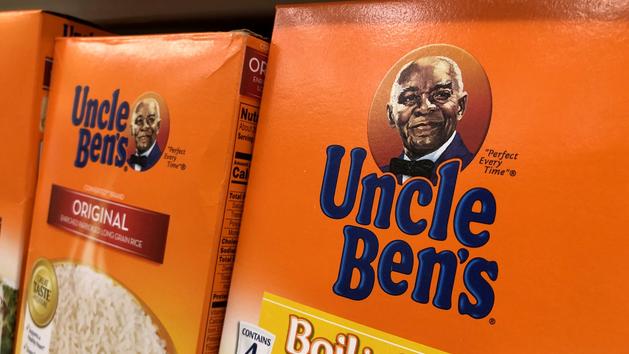Paul Carcenac is a journalist at Le Figaro.
Uncle Ben’s - high chin, honest look - present in many kitchens, will he leave us company? In the context of the current demonstrations against racism, many companies are getting involved and giving pledges to the African-American community. A press release published on Wednesday by Mars Food announces a small revolution on the shelves of our supermarkets. "We recognize that the time has come to evolve the Uncle Ben's brand, including its visual identity ."
The face of a black man, elegant in his tuxedo and bow tie, appeared for the first time on advertising posters in 1946, just four years after the creation of this brand of rice with revolutionary cooking methods. Forrest E. Mars, visionary entrepreneur, creator of the eponymous chocolate bar and M & M's, acquires the rights to a parboiling method guaranteeing better preservation of vitamins.
Uncle Ben's logo and name have two different origins - and therefore meanings -. He was, according to the official account, a Texan farmer whose quality of rice was praised in all the area. This version remains disputed: this character and his patronymic could only be pure invention. Some criticize the nickname "Uncle", which would refer to the way in which southerners called certain descendants of slaves, to avoid giving them "Monsieur".
The story of the face on the packages is more precise. The founder of the brand and an advertiser by the name of Leo Burnett (the man behind the creation of the Marlboro cowboy) had dinner in 1943 in a large Chicago restaurant. The pub man noticed the butler, Frank Brown. " If you want everyone to eat your rice, you better have someone really nice like him to serve it ." Forrest Mars then asked the employee if he agreed to pose for a portrait in exchange for a $ 50 bill. The amount may seem ridiculous, but it amounts to almost 750 euros these days taking inflation into account. The success is dazzling. A few years later, in 1952, Uncle Ben's became the best-selling rice brand in the United States. It remains so.
In 1971, the face of the African American butler from Chicago suddenly disappears from the rice packages, as can be seen in the advertisement below, without anyone really knowing what this decision was linked to. He reappeared in 1983.
In 2007, the brand mandated the TWBA advertising agency to develop its communication. During an advertising campaign, the image of Uncle Ben's is then completely reworked. He becomes a man of power with asserted tastes. The man reveals his suit jacket and his work environment. He appears as president of a large company, a wealthy industrialist. The message praises his constant search for perfection and therefore that of his product.
Uncle Ben's
On this occasion, a few months earlier, Mars Food had launched an investigation into the logo, as reported at the time by the New York Times. " There was no negative response or reference to the stereotypical aspects of the character ," explained Vincent Howell, vice-president of the firm Mars. On the contrary, " consumers reported a positive image, associated with quality, warmth, timelessness ", he stressed. These qualities that communicators wanted so much to highlight. Finally, if the logo lasted 77 years, it is good that it hit its target.
Uncle Ben's now unleashes passions, because some want to read the image with regard to stereotypes and representations of today. Unlike the skirmisher of Banania, whose imagery came directly from colonization, the Uncle Ben's logo was never chosen to represent the 18th or 19th century or the plantations. Its bow tie (which is no longer used on bags of pre-cooked rice) did not originally refer to the household workers of wealthy planters. Its elegance refers to the splendor and the world of luxury of the mid-twentieth century.
This is what the advertiser Jacques Séguéla explained to Le Point on Thursday : "The logo itself was not racist, it is the visualization we had of it that is responsible for these evils today . It is now steeped in a story that we reject today ” . The representations are moving. Not the good-natured smile of Uncle Ben, proud to have his photo taken in full service, one evening in 1943.

